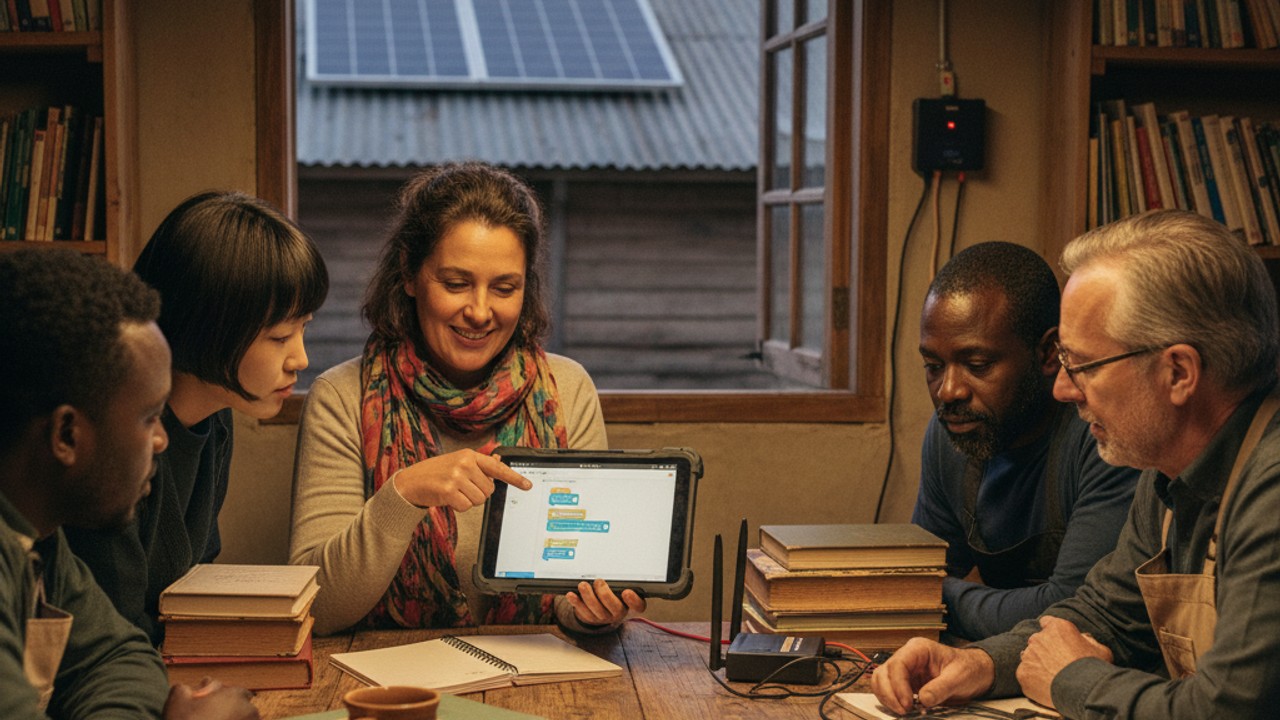When 12-year-old Amina arrived at her village resource center, the room glowed not from electricity but from possibility: a single solar-powered tablet, a shelf of donated textbooks, and a volunteer teacher who streamed a coding lesson for a group that had never used the internet. That evening she learned to build a simple game and, for the first time, saw a path beyond the limits of her neighborhood.
Why this matters now
The global picture is stark and urgent. According to the International Telecommunication Union, billions still lack internet access — leaving learners, teachers, and entire communities cut off from digital learning and economic opportunity. Digital access is no longer a luxury; it is a gateway to education, jobs, and civic life. See the ITU data here: ITU Statistics.
During the COVID-19 school closures, many children were left behind: UNICEF estimated that hundreds of millions of students could not be reached by remote learning, a gap that has deepened learning loss and widened inequities. UNICEF on remote learning.
Nonprofits turning data into action
Organizations across the globe are building solutions that mirror Amina's resource center. Worldreader brings digital books and literacy tools to low-income communities to expand reading and learning: Worldreader. The National Digital Inclusion Alliance works to turn policy and funding into local digital inclusion programs and public access points: NDIA. Code.org and similar groups are introducing computing fundamentals to young learners so they can participate in the 21st century economy: Code.org.
What works: community-led resource centers
Community resource centers combine five essential elements that transform access into opportunity:
- Reliable connectivity and power solutions such as solar systems
- Devices and content that are locally relevant and affordable
- Digital and technical training for teachers, parents, and students
- Ongoing maintenance and support so services remain sustainable
- Policy and funding partnerships that scale successful pilots
When these pieces come together, children like Amina move from curiosity to capability, from watching to creating.
How you can help today
The problem is big but the actions are immediate. You can:
- Support organizations that deliver digital learning and libraries, such as Worldreader or local public libraries.
- Advocate for funding and policy that prioritizes community resource centers and affordable broadband; learn more at the National Digital Inclusion Alliance.
- Volunteer or start a local coding or digital skills club using curriculum from groups like Code.org.
- Donate devices, establish a device-repair program, or sponsor a solar-powered access point in a nearby community.
"Access changes everything."
That simple truth is visible in every classroom with a connected device and every child given the chance to learn. If you felt Amina's spark, turn it into action: share this story, support a local resource center, or connect with an organization that can multiply your impact. Together we can ensure that digital access and technology education are not the exception but the rule.




